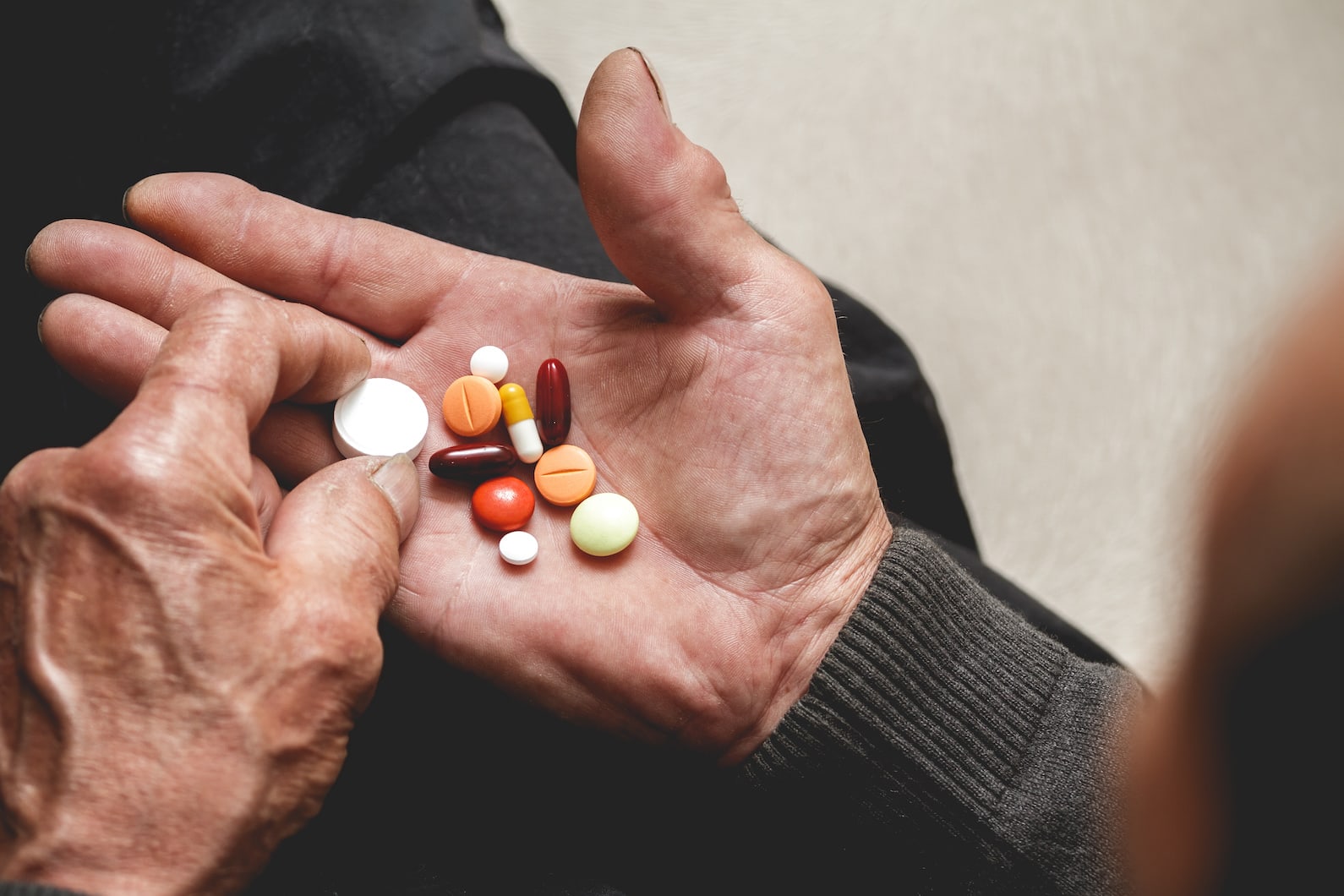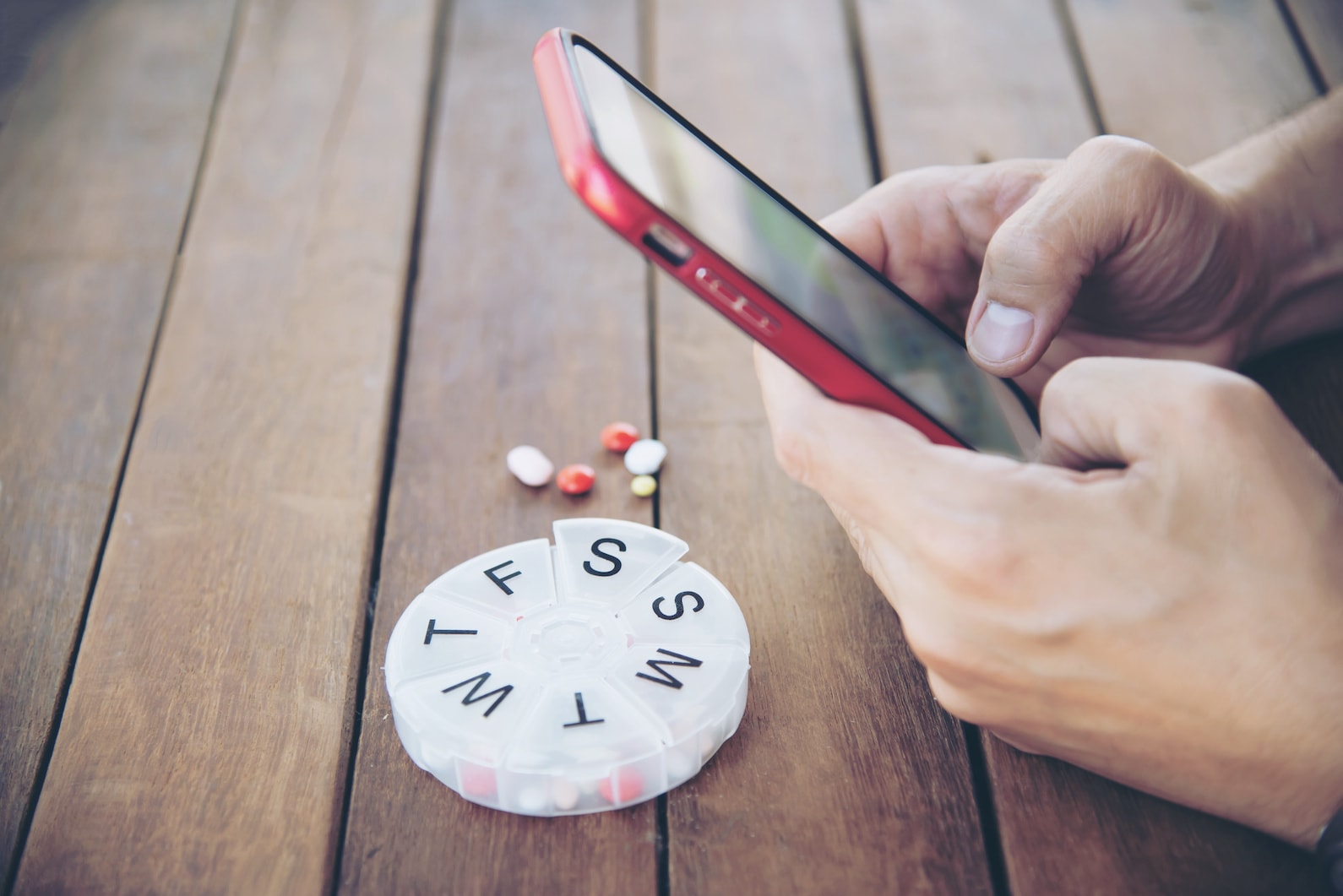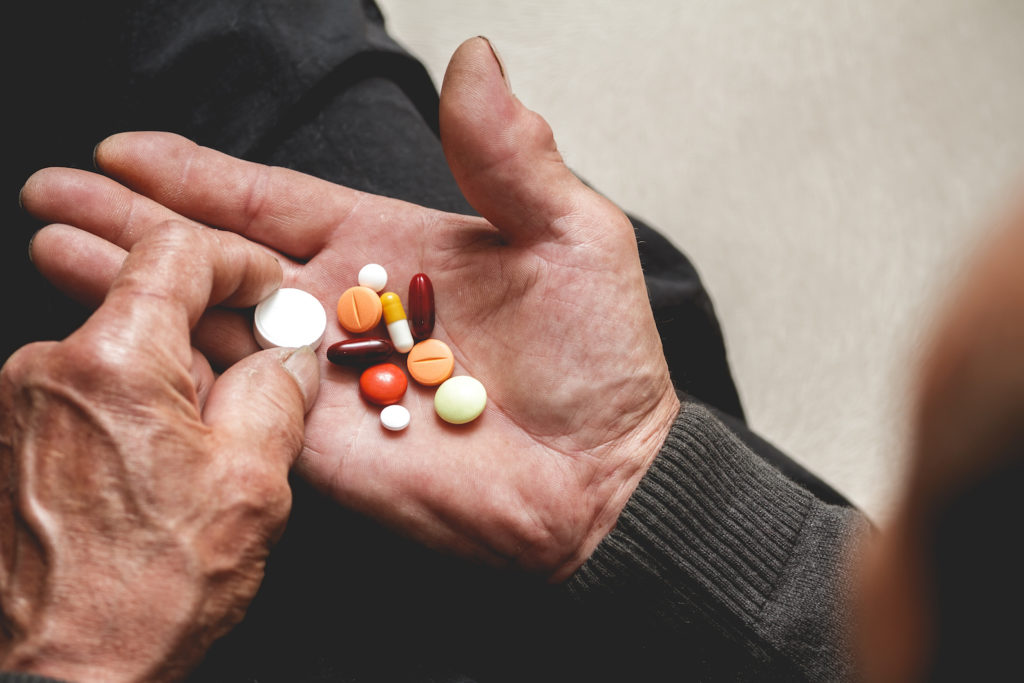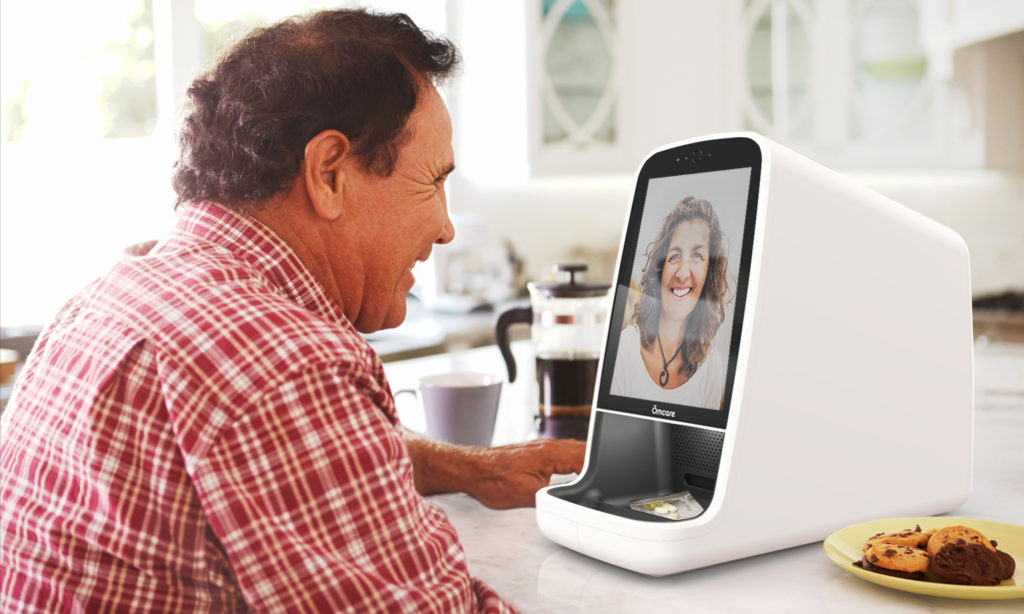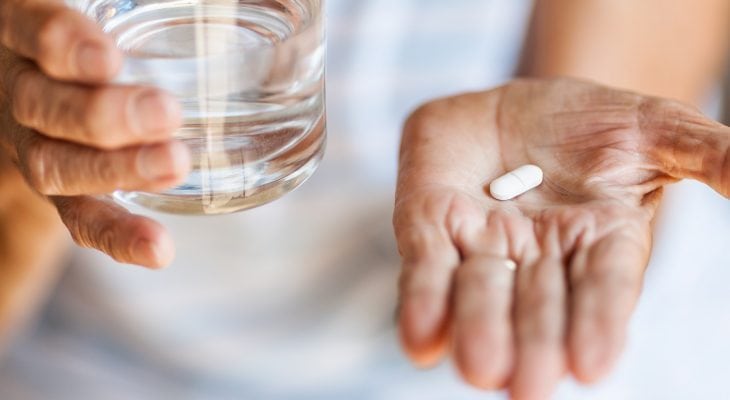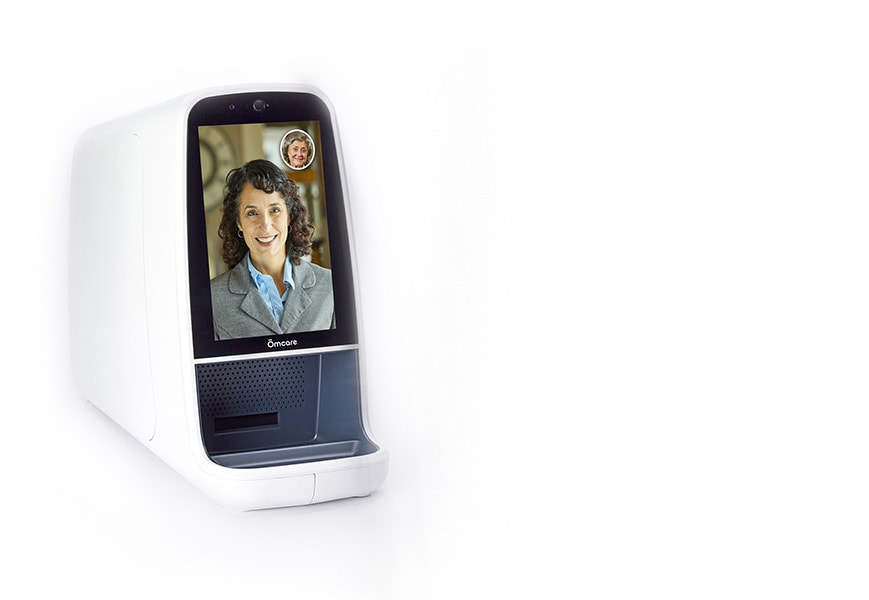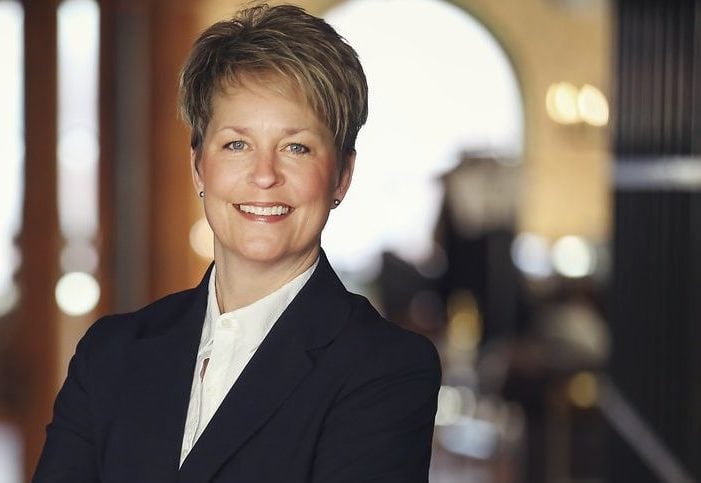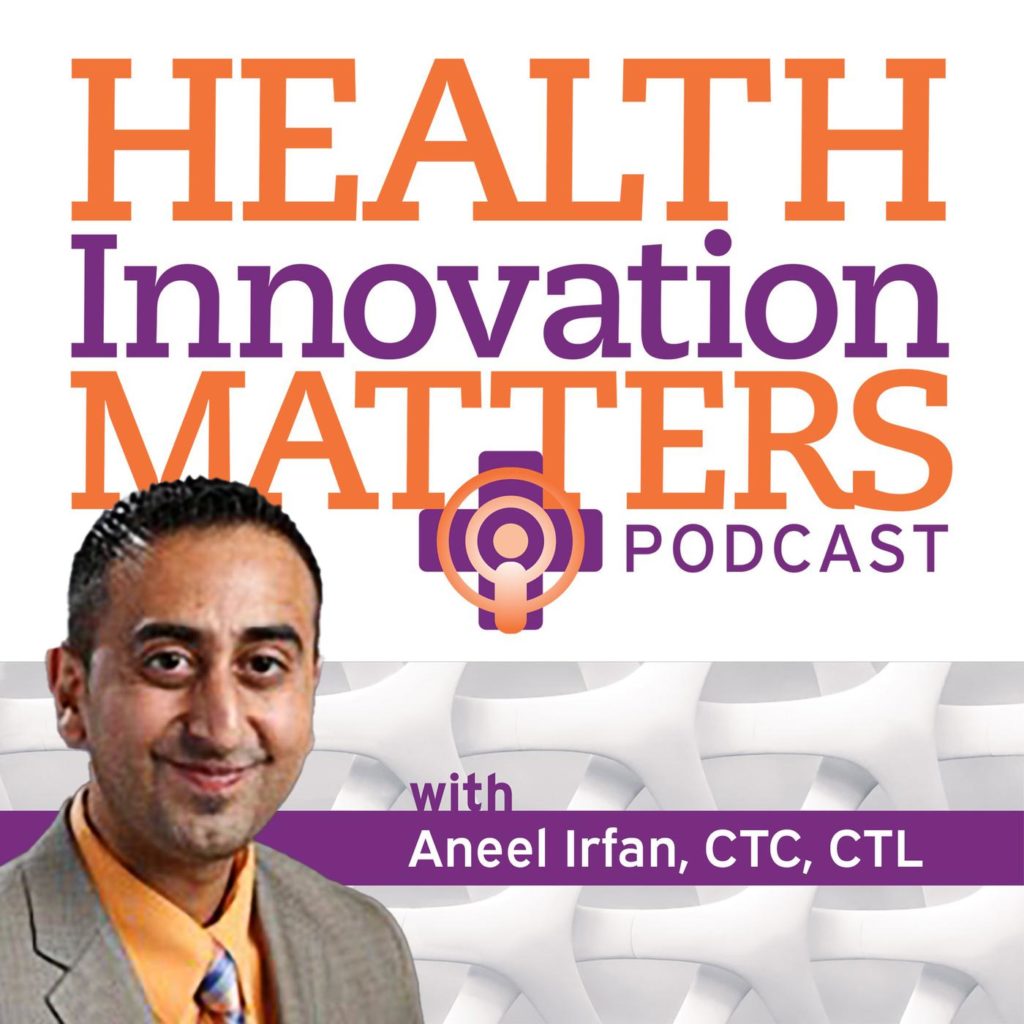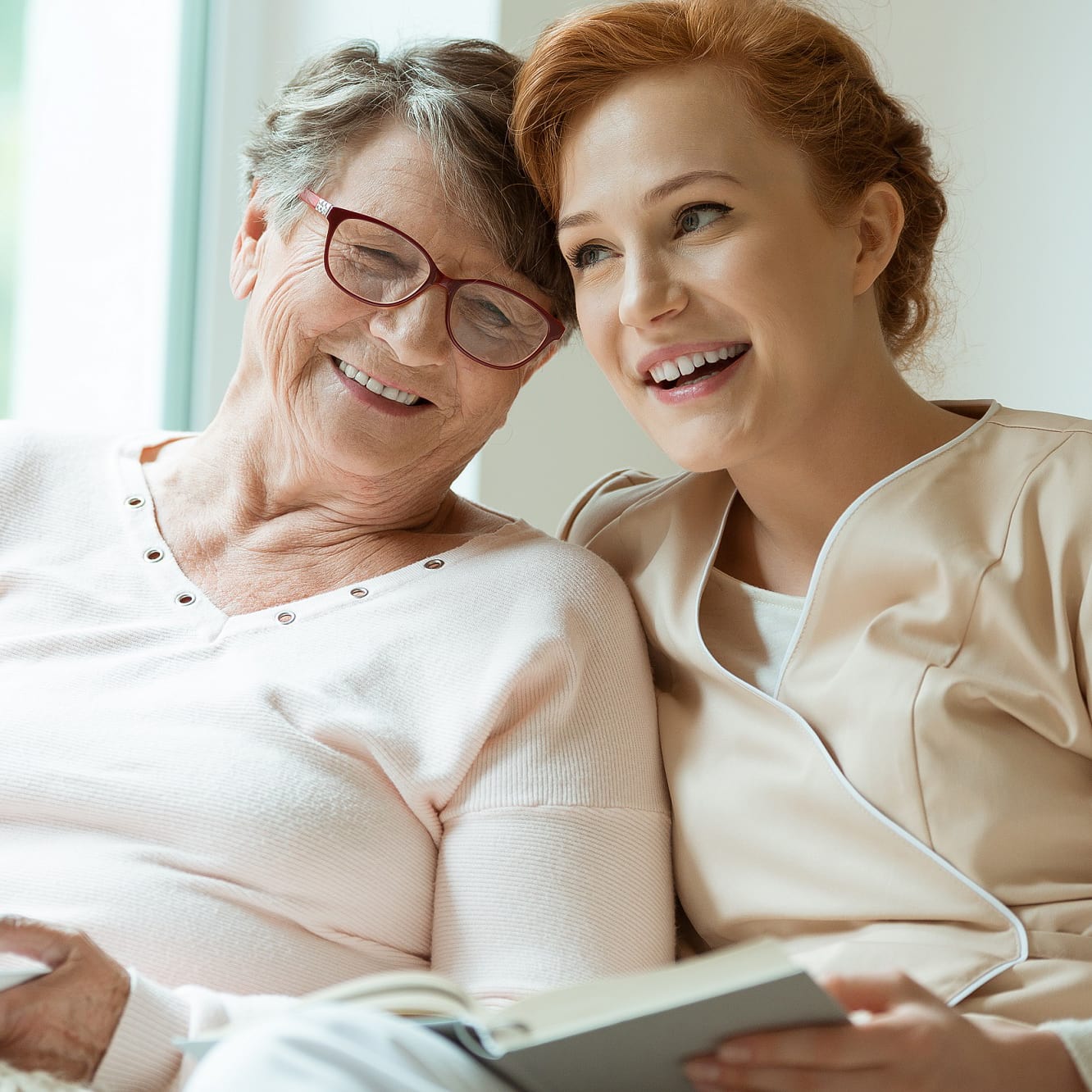6 (Effective) ways to remember to take your meds
How often do you struggle with remembering to take your medication? It's a common problem that can often feel difficult to overcome since it's all about solidifying that habit. Fortunately, some tools and devices are available to help you remember to take your meds on time. We're listing some of the most popular methods for how to remember to take your medications on time each day.
What happens when you miss a pill dose?
There are many reasons why people frequently miss doses: forgetfulness, changing schedules due to work or vacation plans, misplaced pills & pill boxes—the list goes on! The time of day you take your medication matters significantly, especially with those with chronic conditions with strong medications that could cause withdrawal symptoms or jeopardize their regimen.
Depending on all your medications, symptoms for missing doses can vary greatly. Going through your medication regimen as prescribed is highly important. If you're ever unsure what to do if you miss a dose, make sure you reach out to your healthcare provider.
6 Ways To Remember To Take Your Meds
You can use a few different methods to put reminders in place for when it's time to take your daily meds. Here is the list of some of the most popular methods:
Setting a daily reminder or alarm
Set an alarm on your phone or create calendar slots with reminder notifications. If it's too easy to hit snooze on your smartphone or you don't always have your calendar handy, you may need another method. For example, try setting an alarm and placing it next to your pill box so you'll remember to take your pill when you walk over to shut it off.
Use a manual pill dispenser
Choose the same day each week (many choose Sunday) and put all of your pills in their respective day slots in a pill organizer. That way, you can quickly and easily see whether or not you've taken that day's pills. It's a less automated way of doing things but can still help those who take multiple meds per day.
Pair the action with activities every day
Taking your medication on time becomes more attainable when it’s a habit. And most of us already have daily habits like brushing your teeth in the morning or washing your face before bed. By pairing your dose with a daily routine, remembering becomes easier each day.
Notification devices
Use a reminder device like a vibrating pill box or a smart wristwatch that vibrates to remind you to do things. These notification devices often come as complete kits with everything you need, so there's no need to worry about forgetting anything else.
Utilize health apps
Set reminders within health apps such as Medisafe Pill Reminder, Mango Health, MyTherapy, or MedMinder. These apps allow you to lookup drug information, set medication reminders and have the added benefit of tracking your own personal medication records.
Automatic pill dispensers
Automatic pill dispensers are devices with built-in schedules so you can be reminded and dispense your medication the minute it’s due. These devices have helped bridge the gap between patients, family members, and doctors who must ensure the prescription is taken as directed. For older adults remembering to take the meds can be quite difficult: these automatic pill dispensers make it easy.
How Omcare Can Help!
Ōmcare has invented the Ōmcare Home Health Hub, which includes a high-tech pill dispenser with additional easy-to-use features and the R ball. Using advanced technology, we've crafted a device that offers video support on top of automatic dispensing: no more blister packs, cumbersome refills, reminders, or last-minute calls to the pharmacist. Ōmcare's Home Health Hub takes care of everything and ensures you or your loved ones never forget to take their medication. Our Ōmcare customer care team is available 24/7 to answer any questions and provide the expert support you and your loved ones need.
Pill-dispensing tech makes the medicine go down...with human help, that is
When Stephanie Luehrs’s father began losing track of what day it was, she knew his pre-filled pill packs were no longer going to work, even though they were carefully labeled. So she bought him a high-tech pill dispenser.
The MedMinder device she got has compartments for every day of the week, and they pop open with a beep when it’s time to take the pills stored inside. Ms. Luehrs gets a text notification if her dad hasn’t taken his pills. When she learned he missed some doses, she went to his apartment and turned up the volume on the machine. One day, she got a notification that the machine was operating on backup battery—her father, who has Alzheimer’s, had unplugged it. Another time, he didn’t close one of the compartments properly and the box got jammed. Ms. Luehrs had to call customer service, which remotely unlocked the compartments, and then she closed them properly.
People like Ms. Luehrs are finding that when it comes to pill-taking, technology only works with human involvement, especially for people with memory loss. “The machine is great, but you definitely want to have someone to help with refills or other issues,” Ms. Luehrs, of Rogers, Minn., said.
Numerous products and services are designed to make pill-taking easier, from “smart” caps like Pillsy, which screw onto prescription bottles and chirp when it’s time to take pills, to the type of automatic pill dispensers Ms. Luehrs uses.
Other types include Hero, Dose Flip and MedaCube, which hold weeks’ or even months’ worth of pills and can be programmed to release the right amount at the right time. The devices sound an alarm to indicate it’s time to take pills; most also work with apps so that caregivers can get notifications of missed doses.
There are simpler approaches, too: reminder services and apps such as MyMeds, Medisafe and CareZone.
While most of these work as advertised, there’s still the “last mile” problem of getting the pills into the dispensers—and then into peoples’ mouths.
“We don’t have a good system for identifying and matching the right kind of technology with the specific caregiving situation,” said Joseph Gaugler, a professor and director of the Center for Health Aging and Innovation at the University of Minnesota. “A lot of technology for seniors is marketed as being good for all.”
Some medical experts told me patients would take their medicine more often if they were better educated about why it’s important. I’m a bit dubious of that argument. We all know a good diet and physical activity can stave off illness, yet it’s still hard for many people to stick to healthy eating and exercise habits. Some experts said it’s the difficulty of forming new habits that makes pill-popping so hard—and not just for older adults with dementia.
I won’t remember to take vitamins unless the bottle is sitting right next to my coffee maker, where I’ll be sure to see it. After all, none of my daily habits are as entrenched as my morning coffee ritual. But even when the bottle is right there, I often conveniently forget. (I don’t like swallowing pills.)
There are many other reasons people won’t take pills—the cost of medication, concerns about side effects and the reminder that they aren’t in perfect health. Approximately 50% of patients with a chronic illness don’t take medications as prescribed, according to several studies. This is a big deal when you consider that 69% of Americans ages 40 to 79 took one or more prescription drug in the past month, and 22% took five or more, according to the Centers for Disease Control and Prevention.
Andre Bierzynski, a director at AARP Innovation Labs, has been working with startups to make medicine-taking easier. He said the most promising solutions combine technology with human assistance. He pointed to an early-stage startup he’s been working with called Ōmcare. The company intends to sell its automated pill dispensers to senior-care providers, who would then lease the device to consumers and charge them for their services. The senior-care provider that’s testing it with about 50 seniors in Minnesota has employees who check in with people via an on-device video screen to make sure they’re taking their pills properly. Ōmcare is partnering with a Midwestern pharmacy to provide the pill packs the machines dispense. Company founder Lisa Lavin said she plans to commercialize the service in the Midwest by the end of the year, then expand into more states next year.
Read the full article from The Wall Street Journal here.
Tech behind pet webcam could help telehealth offering medication tracking
Burnsville-based Omcare Inc., a digital health company working to bring its "telehealth portal" to market, cut its teeth with an unlikely product: a webcam for pets.
Following a merger, Omcare is the new identity of Anser Innovation, a firm that makes a webcam that connects pets with their owners called PetChatz. Everything is going according to plan, CEO Lisa Lavin said. Anser built out its video chatting hardware with PetChatz, but the goal was always to eventually make the technology with humans in mind.
Omcare is now looking to commercialize what it calls the Home Health Hub, a tablet-like device that connects users with health care providers and pharmacists via telehealth and dispenses medication. The Home Health Hub helps seniors and people with chronic conditions with medication adherence, or making sure they take the right medication at the right time each day, by providing visual confirmation of them taking the medication. It can work with any telehealth system, Lavin said.
The firm has already recruited a heavyweight board that includes former UnitedHealthCare and Optum CEO Jeaninne Rivet, Bind Benefits Inc. President Jodi Hubler and Surescripts' Chief Intelligence Officer Mark Gingrich.
Read the full article here.
Maintaining medication adherence during a health crisis

So, what is medication non-adherence? According to the American Pharmacists Association, non-adherence includes delaying or not filling a prescription, skipping doses, splitting pills, or stopping medication early. In addition to generating an estimated $100 to $289 billion in health care expenses annually, non-adherence takes a toll on the health of seniors who may be on long-term medication and need ongoing, consistent care.
Millions of older Americans currently depend on a home aide or family caregiver for help with their medications, but the current COVID-19 crisis is causing lockdowns and restricted visitation rules at nursing homes, while independent seniors are isolated in their homes. As a result, medication adherence is at risk for all older adults. In addition, they are at risk of suffering from loneliness as a result of extended isolation and a disruption in their social connections.
If you or someone you know is a caregiver, or if you’re concerned about medication management for a loved one or family friend during the current health crisis, here are three strategies to stay socially connected to loved ones and help ensure they take the right medication at the right time.
Read the full article from Senior News.
3 Strategies to help aging loved ones master their meds
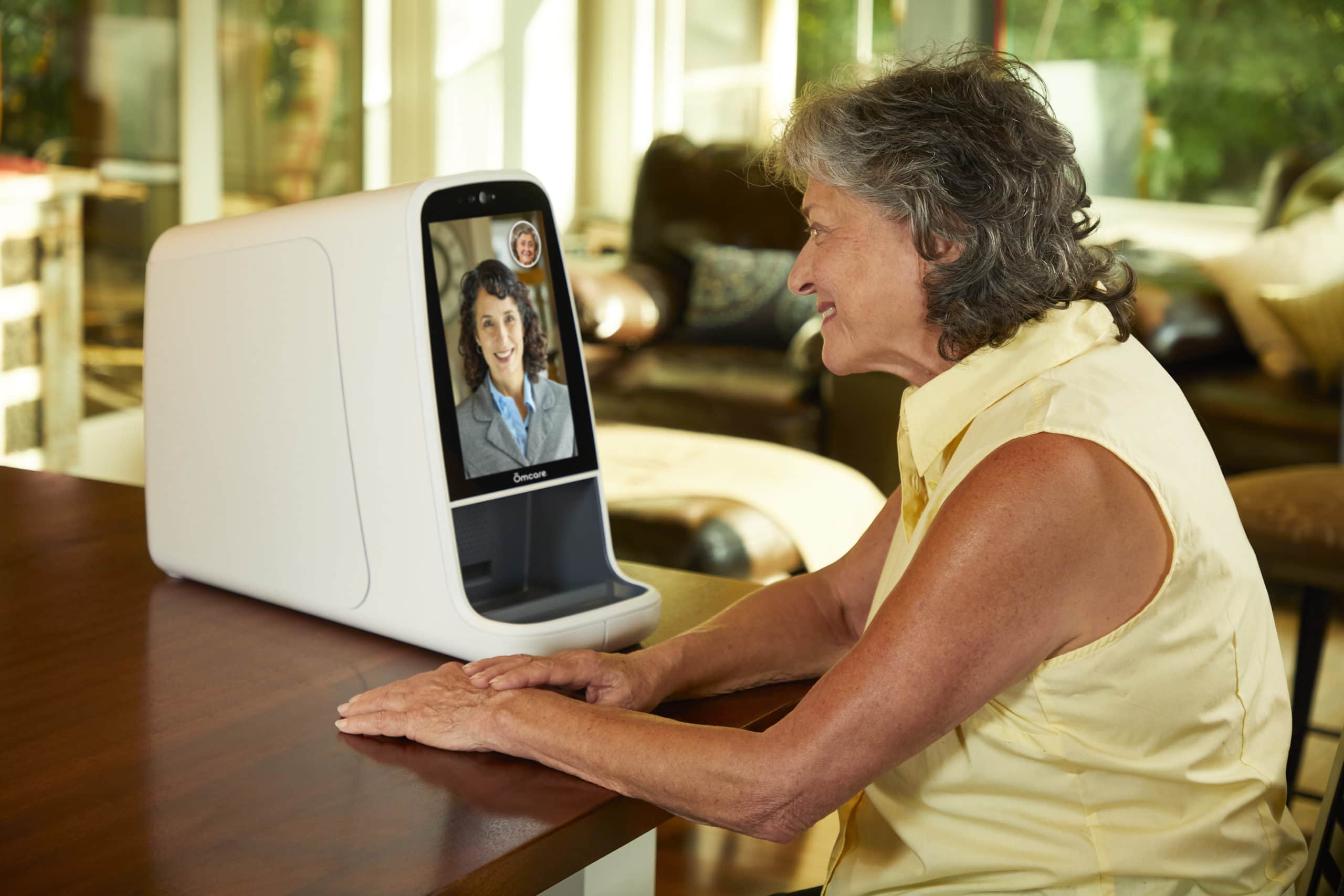
Medication non-adherence directly impacts the senior population, wherein millions of seniors depend on a home care aide or family caregiver to administer medication. Managing the dosages and schedules of multiple drugs can be a complicated, confusing, and even stressful task for caregivers. As a result, part-time family caregivers often experience anxiety related to not knowing if their loved one has taken the right medication at the right time.
If you or someone you know is a caregiver, or if you’re concerned about medication management for a loved one or family friend, here are three strategies to help ensure they take the right medication at the right time.
1. Establish a routine and method of reminders.
A consistent care routine is the foundation of a successful, long-term care plan. Following a simple, memorable routine and reminder system can help aging loved ones remember to take their medications throughout the day, even if their caregiver can’t always be there to remind them.
Continue reading on The Caregiver's Voice.
Ōmcare® unveils its Home Health Hub at HIMSS20 Global Health Conference

(FOR IMMEDIATE RELEASE)
Ōmcare® unveils its Home Health Hub at HIMSS20 Global Health Conference
Ōmcare Home Health Hub™ designed to enable remote care and medication assistance via two-way audiovisual technology
Burnsville, MN (February 17, 2020) – Ōmcare® announced today that it will preview its soon-to-be-released Ōmcare Home Health Hub™ at the HIMSS20 Global Health Conference March 9-13 in Orlando, FL. HIMSS20 attendees can visit booth 6493 to see how the Ōmcare Home Health Hub can improve medication adherence for aging adults and people with chronic, complex health conditions.
Ōmcare is a Minnesota-based digital health company that aims to extend the reach of caregivers and improve medication adherence and outcomes through its Ōmcare Home Health Hub, which gives caregivers of all types – from physicians and pharmacists to home care providers or family members – the ability to see and speak to elderly or disabled dependents and confirm compliance with medication treatment plans from anywhere. The easy-to-use Ōmcare system is designed to serve as a conduit for telehealth and virtual care services. Ōmcare facilitates remote monitoring and interaction via the audiovisual interface and provides confirmation of a patient’s actions and status, which supports and gives family members greater peace of mind.
The two-way video capabilities of the Ōmcare Home Health Hub allow individual caregivers or senior living facilities to ensure proper medication adherence through visual confirmation of right medication, right person, right time – from anywhere – which can significantly impact quality of life and clinical outcomes while reducing health care costs.
“We’ve seen a growing interest in technology that extends the reach of caregivers and enables remote care, from anywhere,” said Lisa Lavin, founder and CEO of Ōmcare. “Our research shows that the marketplace is ready for the Ōmcare Home Health Hub and that utilization of this technology has the potential to change the way the world cares by reducing the burden and cost of caregiving and improving outcomes and quality of life for patients.”
Ōmcare earned its third patent from the United States Patent and Trademark Office (U.S. Patent No. 10,347,377) for the company’s web-enabled, audiovisual, medication-dispensing telemedicine system for the home in 2019. The device made its official debut at the Leading Age Annual Conference and Expo late last year, where it earned nods from industry media as an “emerging technology in the caregiving space.” Ōmcare was also recently named among the “20 Hottest Flyover Tech Companies” by The New York Observer, based on insights from a panel of healthcare and business experts at the 38th Annual JP Morgan Healthcare Conference.
To learn more, visit https://www.omcare.com. To schedule a meeting with the Ōmcare team during HIMSS20, email info@omcare.com.
###
For more information:
Barbara Tabor, APR / (651) 230-9192 / barbara@taborpr.com
About Ōmcare
Ōmcare is a digital health technology company focused on extending the reach of caregivers, increasing medication adherence, and improving treatment outcomes by harnessing the power of remote care and two-way video technology. By partnering with pharmacies, payers, providers, and family caregivers, Ōmcare strives to help people live healthier, more vibrant, independent lives. Learn more at www.omcare.com. Follow on Twitter (@Omcare_Health) and LinkedIn.
Podcast: Lisa Lavin on game-changing technology for seniors
Ōmcare founder and CEO Lisa Lavin was recently interviewed for the podcast Health Innovation Matters.
In this episode, Logan Plaster, editor of StartUp Health, mixes the personal with business as he interviews Lisa about the source of her passion for changing the caregiving experience and how technology can extend the reach of caregivers and ensure the right medication is taken by the right person at the right time.
Tune in to the podcast episode: https://healthinnovationmatters.libsyn.com/mcare-with-logan-plaster-and-lisa-lavin
Empowering family caregivers and improving medication adherence with connected technology
Exclusive technology from Ōmcare aims to offer an unbroken chain of communication between patients, providers, and family caregivers.
By Lisa Lavin, founder and CEO, Ōmcare
The sandwich generation
The United States population is aging and, in the process, they will require more in the way of long-term care support and services. The senior community will more than triple before 2050, with half of these individuals expected to need long-term care, which will come from either skilled nursing facilities or adult children or family members.[1]
Adults who are part of the sandwich generation—that is, those who have a living parent age 65 or older are pulled in many directions. Thirty-five million Americans provided unpaid care to an adult age 50 or older in 2015. The vast majority (85 percent) were caregivers for a relative, primarily an aging parent.[2]
Caregiving for family members takes many forms. Nearly half of family caregivers travel to care for someone, while an additional 35 percent are sharing a home with the loved one they’re caring for. Some are caring for a spouse or partner, many for a parent — all working to help that person stay at home for as long and as comfortable as possible.[3]
Technology’s integration with health care
Amidst rising costs and changing demographic needs, telemedicine has emerged as a viable solution for doctors, patients, employers, and insurance providers to cut costs and save money.
It’s no surprise then that the utilization of telemedicine is growing. According to Deloitte, physicians conducted about 100 million telemedicine appointments globally in 2014, which generated potential savings of more than $5 billion when compared to the cost of in-person doctor visits. And from 2014 to 2018, the use of non-hospital-based provider-to-patient telehealth grew 1,393%.
Another recent report from FAIR Health showed that the use of telehealth services is growing faster than usage at retail clinics, urgent care centers, and emergency departments. The most recent FAIR Health findings show that overall telehealth claims are expected to increase 624% from 2014 to 2018.[4]
By increasing access to physicians and specialists, telehealth helps ensure patients receive the right care, at the right place, at the right time. Currently, 76 percent of U.S. hospitals connect with patients and consulting practitioners at a distance through the use of video and other technology.[5]
New telehealth and remote monitoring technologies are fundamentally changing the way people interact with the health care delivery system.
Connect caregivers with the right technology
From tracking vital signs with remote monitoring devices to communicating quickly with a nurse through a web portal to receiving on-the-spot care from a doctor via video chat, telehealth aims to make life easier.[6]
An AARP study on technology’s impact on caregiving revealed that 68% of caregivers would routinely use technology to manage critical information about patient health, vitals, and document medications. [7]
The right technology can give health care providers and caregivers a means of communication that is essential to improving patient outcomes. For example, patient monitoring programs that allow virtual check-ins enable patients to extend the duration between doctor's visits or unplanned hospital stays. Meanwhile, a KLAS Research report surveying 25 healthcare organizations found that 38% of healthcare organizations using remote patient monitoring programs for chronic disease management reported reduced admissions, while 17% cited cost reductions.[8]
Technology can facilitate this change by tracking and alerting family and medical caregivers in the event of identified house safety problems-fireplace safety, water safety, walking, etc. It can also mitigate environmental variables at home-noise, lighting, temperature-thereby decreasing the likelihood of trouble and resulting habits in people with dementia.
Technology can also play a direct care role in providing voice assistance to the person with dementia for repetitive questions, while delivering helpful input for both the elderly individual and caregivers from trusted circles— family, friends, neighbors, and other caregivers.[9]
Remote patient monitoring benefits patients and care networks
Remote patient monitoring is a digital health solution that captures and records patient physiologic data outside of a traditional health care environment. As providers increasingly turn to remote patient monitoring technology to improve patient outcomes, limit costs and cut down on using more expensive services, healthcare industry newcomers and legacy players alike are vying for a piece of this growing market.
With data collected over time, care team members can manage and treat chronic conditions in a way that is effective, timely, and realistic to the patient and caregiver’s lifestyles. The data generated through this approach can help facilitate conversations between patients and physicians and facilitate opportunities to intervene quickly to avoid complications. Using technology, a patient managing a chronic condition can connect more frequently with their care team from home, and spend less time going to the doctor’s office.
In addition to providing care teams with better, more actionable information earlier, remote patient monitoring has been praised for engaging patients in their care by providing them access to their personal data so they can better understand the impact of their treatment and advocate for their medical needs.
Older adults with long-term care needs should be able to live independently and age while minimizing stress on family caregivers. Telehealth strategies can support this process by improving access to care and ensuring its quality, while reducing the strain put on caregivers that comes from time constraints and managing logistics, added mental and emotional stress, and financial burdens of providing long-term care to an aging loved one. The right technology can address these issues and allow for loved ones to age gracefully and in their best health.
About Ōmcare
Ōmcare is a health technology company aspiring to extend the reach of the caregiver, increase medication adherence, and to improve treatment outcomes by harnessing the power of remote care. We aim to achieve this through our proprietary interactive technologies - promising right pill, right time, right person. By partnering with pharmacies, payers, providers, and family caregivers, our vision is to help people live healthier, more vibrant, independent lives.
[1] "Aging Cost In America." Modern Health Talk. N. p., 2018. Web.
[2] "The Sandwich Generation | Pew Research Center." 30 Jan. 2013
[3] "Caregiving Guides For Families Providing Care At Home". AARP, 2019, Guide to Providing In-Home Care for a Loved One
[4] "Telehealth Use Increasing Most Among Non Hospital-Based Providers." Healthcare Dive.
[5] Fact Sheet: Telehealth - aha.org. Fact Sheet: Telehealth PDF
[6] Telehealth and Seniors | Updated for 2019 | AgingInPlace.org.
[7] Winifred V. Quinn, A., Ellen O’Brien, C. and Greg Springan, M. (2019). Using Telehealth to Improve Home-Based Care for Older Adults and Family Caregivers
[8] "Hospitals Are Finding ROI In Remote Patient Monitoring Programs." mHealthIntelligence. N. p., 2018.
[9] "Telehealth Can Give Caregivers Much-Needed Support, Peace Of Mind." mHealthIntelligence. N. p., 2018.
Image: "Telemedicine & Telehealth Services Covered By Medicare | Medicarefaq." MedicareFAQ. N. p., 2019.
Five new health and caregiving technologies November 2019
LeadingAge in San Diego and more. Entrepreneurs clearly see the opportunity for providing tech-enabled services to help care for older adults. Large events like Leading Age, Argentum, and sub-events within CES and HIMSS all point to the business potential that draws startups as well as new offerings from existing players – in what may become an increasingly crowded market. Here five recent announcements, two from the Startup Garage at Leading Age in San Diego -- adding three others from recent press releases. All information is drawn from the websites of the companies themselves.
Ōmcare (LeadingAge) "Ōmcare is far more than a pill sorting system with self-reported validation. With three issued patents and more pending, Ōmcare’s in-home remote dispensing and integrated care monitoring will drive a new way to measure adherence and set a new standard for care coordination that is simple, safe and easy to use. Ōmcare links remote dispensing with video confirmation such that every dispensing event is directly observed and confirmed. Caregivers know immediately if a dose is missed or incorrectly administered. Other smart pill dispensers and mobile compliance apps depend on self-reporting rather than direct observation. Ōmcare’s approach will change how the industry measures medication adherence." Learn more at Ōmcare.
Read the full article from Aging In Place Technology Watch here.
A test of pills: Ecumen, Thrifty White to join unique telemedicine pilot project
What could be handier? A new machine will dispense prepackaged prescription meds at home, while at the same time allowing the elderly patient to video chat with family and medical staff.
A Burnsville company is partnering with Ecumen and Thrifty White Drug on a pilot project to do just that. Ōmcare has designed its Telemed System to help make sure older adults are taking their medications as prescribed -- at the right time, in the right way.
The Telemed device can hold 15 to 30 days worth of medication, which for the pilot project will be provided by Thrifty White Drug -- individually packaged and pre-slit for easy opening.
The three-way video system allows family or medical staff to call when it’s medication time, and to check in, chat a bit, and make sure the patient is taking the medicine as prescribed.
“It’s the first of its kind, it’s really innovative,” said Brett Anderson, Ecumen vice president of health and clinical services.
Read the full article from the Detroit Lakes Tribune here.


